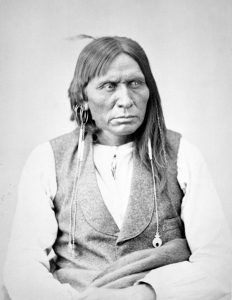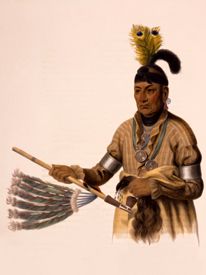Summaries: A B C D E-I J-K L-M N O P Q-R S T-V W X-Z
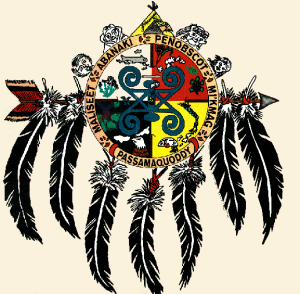 Wabanaki – The Wabanaki Confederacy consisted of several northeastern Algonquian-speaking tribal nations, including the Mi’kmaq, Maliseet, Passamaquoddy, Abenaki, and Penobscot. The tribes formed the Confederacy after increasing raids by their ancient Iroquois enemies. Their ancestral homelands stretched from Newfoundland, Canada, to the Merrimack River Valley in New Hampshire and Massachusetts.
Wabanaki – The Wabanaki Confederacy consisted of several northeastern Algonquian-speaking tribal nations, including the Mi’kmaq, Maliseet, Passamaquoddy, Abenaki, and Penobscot. The tribes formed the Confederacy after increasing raids by their ancient Iroquois enemies. Their ancestral homelands stretched from Newfoundland, Canada, to the Merrimack River Valley in New Hampshire and Massachusetts.
Waccamaw – One of the small tribes formerly dwelling on the Lower Pedee River and its branches in South Carolina and the adjacent border of North Carolina.
Waco – The Waco tribe, also spelled Hueco, is a division of the Tawakoni people, who originally lived on the Southern Plains of northeastern Texas. The Tawakoni were a band of the Wichita tribe. Today, many of their descendants are members of the federally recognized Wichita and Affiliated Tribes, headquartered in Anadarko, Oklahoma.
Wailaki – An Athapascan tribe or group of many villages formerly located on the main Eel River and its north fork from Kekawaka Creek to within a few miles of Round Valley, California.
Walapai – See Hualupai
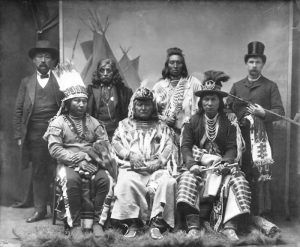
Walla Walla Indians
Walla Walla – A Sahaptin tribe who lived for centuries on the Columbia River Plateau in northeastern Oregon and southeastern Washington, their name is translated several ways but, most often, as “many waters.”
Wampanoag – The Wampanoag people, were originally natives of Massachusetts and Rhode Island. The Wampanoag people befriended the pilgrims at Plymouth Rock and brought them corn and turkey for the famous first Thanksgiving.
Wappinger – The Wappinger people were initially located on the east side of the Hudson River between the Bronx and Rhinebeck, extending east to the crest of the Taconic Mountains on the border between New York and Connecticut.
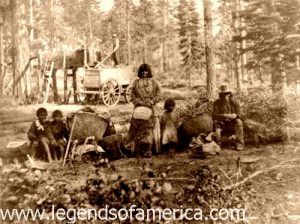
Washoe Indians, Lake Tahoe, 1866
Washoe – An indigenous Native American people, the Washoe originally lived around Lake Tahoe and adjacent areas of the Great Basin. Today, they are the federally recognized Washoe Tribe of Nevada and California, with an approximate population of 2,000.
Watlala – The Watlala people, also called the Cascade Indians, were a Chinookan tribe who lived at the Cascades of the Columbia River and the Willamette River in Oregon.
Wea – The Wea people were a sub-tribe of the Miami Indians. They were first mentioned in Jesuit relations in 1673 as living in eastern Wisconsin.
Wenatchee – See Yakama
Wichita – A Caddoan-speaking people of Kansas, the Wichita lived in villages of grass huts resembling haystacks. After a defeat at the hands of the Spanish in 1662, the Wichita moved south into Oklahoma.
Wiyot – The Wiyot are the original people of Northern California, where their surviving descendants still live today, along with Wiyot descendants living together with Yurok, Hupa, Tolowa, and Mattole Indians on four rancheros. These California Indians have partial control over the rancherias, and each tribe has its government, laws, police, and other services. However, the US government still considers the Wiyots citizens and controls some of their decisions. Today, since the rancherias comprise Indians from several different tribes, they are ruled by tribal councils representing all the ethnicities of each rancheros.
Wyandot/Huron – The Wyandot or Huron are an Iroquoian-speaking people of several bands whose ancestral lands were in southern Ontario, Canada. They later moved to Michigan, Ohio, Kansas, and Oklahoma.
Summaries: A B C D E-I J-K L-M N O P Q-R S T-V W X-Z
Also See:

